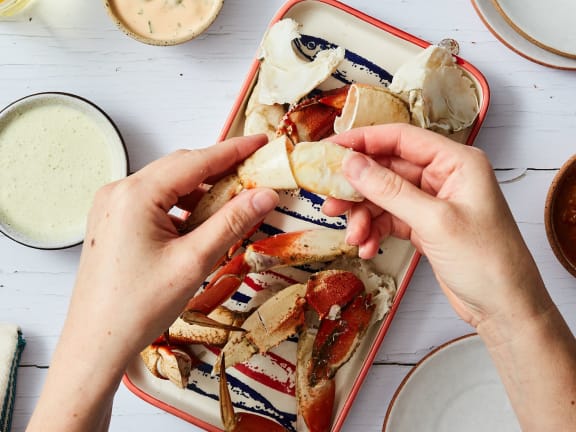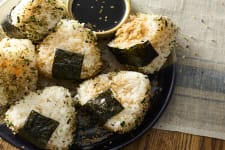Our wild-caught Dungeness Crab comes pre-cooked and pre-scored for your ease and convenience. That means it's ready to heat and eat, straight out of the pack.
To add your own flavorul twist to this already delicious crustacean, try poaching it! This gentle approach to heating Dungeness crab from Alaska is foolproof, endlessly remixable, and a cinch to pull off, making it a technique you’ll want to hone for everything from easy weeknight meals to effortless decadence on the weekends.
Why Poaching Works
For a proper poach, you won’t bring the legs to a full on boil — a bare simmer is all you need. This allows the Dungeness crab to retain more of its juices, nutrients, and texture than if it were to be heated up in a rolling boil or even a moderate simmer.
Poaching crab allows you to infuse the crabmeat with the flavors you’ve assembled in your cooking vessel. The poaching liquid also benefits from the subtle intermingling of flavors, picking up some of the briny goodness of the Dungeness crab. That means you can create a delicious broth to serve alongside your crabmeat or to save for another use.
Keep in mind the Dungeness crab legs and claws that we offer are already cooked, so they typically won’t need more than 5 minutes to be warmed through, even at the low temperatures you’ll use while poaching them.
Poaching Basics
Start by building a poaching liquid whose flavors are distinctive enough to make an impact on your dish. Generally, your liquid will be water-based, spiked with flavorful components. These flavors don’t have to be bold — a simple mixture of white wine, garlic, and lemon will do just fine — but you do want your poaching liquid to be intense enough to adequately season the crabmeat.
-
For something inspired by Chinese cuisine, try a poaching liquid enhanced with Shaoxing wine, soy sauce, ginger, and scallions.
-
Or, use lemongrass, ginger, and kaffir lime leaves to build a Southeast Asian flavor profile.
-
White wine, garlic, and herbs de Provence will take your dish to France.
-
Sliced garlic, smoked paprika, and a bit of sherry and sherry vinegar builds a broth reminiscent of Spain.
Don’t fret so much about measurements here, just use your sense of taste to guide you. The most important consideration is to create enough poaching liquid to submerge your crab legs.
Combine these ingredients in a pot large enough to hold your crab legs, bringing this mixture to a simmer before turning down your burner to its lowest setting; there’s no exact temperature you’re aiming for here, but you want little to no movement in your poaching liquid to ensure that you’re warming your crab legs in gentle heat. Add in your thawed crab legs, then set your timer for 5 minutes.
Serve your poached crab legs alongside something that can absorb any juices the drip out from the shells as you snap them open. If your poaching liquid is particularly delicious, reserve it as a broth to enjoy along with your poached legs, or as a stock to cook everything from rice to noodles, which will complement any meal featuring Dungeness crab from Alaska.
More Poaching Inspo
Poaching liquids can also be made from a fish, chicken, or veggie stock if you prefer. Even subtle dashi works well. Try adapting Food & Wine’s recipe for crab and tofu in dashi by poaching your shell-on crab legs in the hot dashi, after the pot has been removed from the heat; there will still be plenty of residual heat in the liquid to warm up the crab and extract flavor from the shells. Bring everything to a simmer after you add soy and mirin, then serve immediately.
Light beer also works well as a poaching liquid; try adapting this recipe for beer-poached crabs from Melba Wilson for use with your Dungies, keeping an eye on the proportions and technique. You’ll discard the poaching liquid once your crab legs are brought to temperature, but there will be plenty of this tasty juice trapped within the shells to create a hot, delicious mess once you get cracking.






